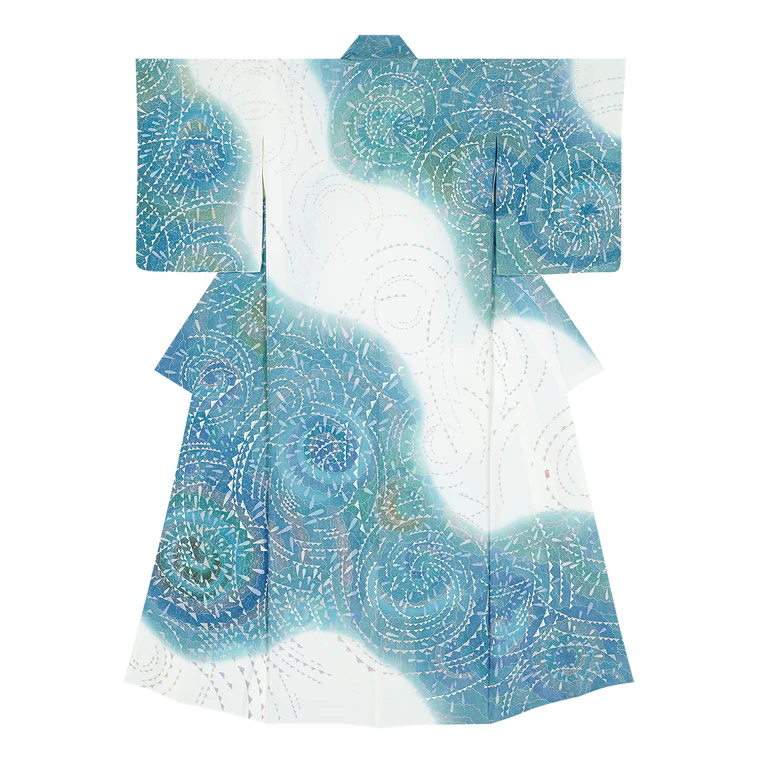Formal kimono with design in yūzen dyeing. “Spring”
Year.2014Tomoji Ueda
1949 -- Textiles
- Price Range Please Inquire
- Awards at Japan Kōgei Assoc. Exhibitions : 2
Description
-
CategoryTextiles
-
Year presented2014
-
RarityUnique
Techniques Used
Yūzen dyeing
Yūzen dyeing (yūzenzome) is one of Japan’s best-known traditional dyeing processes. It involves drawing designs on white fabric with a paste resist before dyeing the fabric. First, the fabric is cut into the shape of a kimono and an outline of the design is drawn onto the cloth using the blue dye of the Asiatic dayflower (aobana), which can later be washed away without leaving a trace. A paste resist is then applied over the lines of the outline, creating masked-off areas that prevent the colors from mixing, and the design is dyed. Finally, the paste resist is washed away, leaving behind fine white lines of undyed fabric where the resist was applied. This style of yūzen is known as itome yūzen (“line yūzen”). Resists may also be applied broadly across the fabric to create designs without white lines. This style of yūzen is known as sekidashi yūzen.
Selected exhibitions
- The 61th Japan Traditional Kōgei Exhibition (2014)
- Selected

